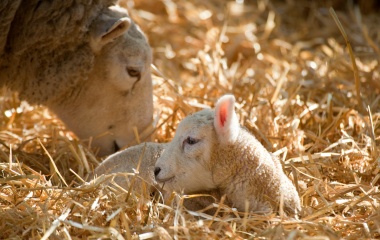
In our last post, we discussed the serious prohibition of issuing halachic rulings after having had even minimal amounts of alcohol. Yet the practical impact of this prohibition is rather limited.
“Is it possible [the teaching of] Mishna is also [forbidden]?” (Keritot 13b). To this seemingly strange question—why would one think teaching Mishna[1] after having a drink is allowed?—the Gemara says there is no such problem. It is hora’ah, practical rulings of Jewish law, that one may not issue after having a drink. But Mishna may not be relied upon for practical rulings[2]. It is the basis of Jewish law, the ground floor that serves as the foundation of Jewish law. Yet before we issue a practical ruling, we must complete the structure. Thus, one who has consumed relatively small amounts of alcohol may teach Mishna.
Rav Yossi goes even further and includes Talmud in matters that are not considered hora’ah, and may be taught even if one had a revi’it (3.3 ounces) of wine. Being able to analyze all of Talmudic literature does not necessarily give one licence to issue practical halachic rulings[3].
Yet even matters of practical halacha may often be taught after having a small amount to drink. “One who has drunk wine may rule that a creeping animal is ritually impure and a frog is pure.” This may be a very practical ruling (at least, in Temple times it was) but it requires no analysis, no weighing of options, and no examination of conflicting views before answering. All it takes is for one to “go and read” what it says in the Torah. The Torah very clearly lists the eight rodents that convey impurity. A little bit of wine will have little impact on issuing such a ruling.
Truth be told, the vast majority of halachic questions asked do not fall under the category of hora’ah. They are what we might call ma’areh makom, pointing out the place, where a ruling has been issued.
Quoting the authoritative rulings of others is a matter of possessing a certain level of knowledge, not a matter of hora’ah. Issuing rulings in cases where one can’t remember if they davened mincha, if some milk fell into chicken soup, or if one must give tzedakah on wedding gifts, is little more than passing on information that have been ruled upon in Jewish law. Encyclopaedic knowledge of Jewish law does not make one a posek. It makes one a talmid chacham, and one from whom there is much to learn.
Hora’ah, halachic rulings, are rulings regarding new cases, involve innovative thinking and often have meagre sources to help guide the posek[4]. To answer these questions, one’s mind must be fully focused and then some. One must possess not only great Torah learning, but an understanding of the surrounding society and culture.
Practical halachic rulings are often complex and highly nuanced, where the smallest of factors may play an important role in the “bottom line” ruling. And often it is non-technical halachic factors that that have the greatest influence on the correct ruling. Broader issues such as monetary considerations, social norms, the impact on others, and communal policy are just some of the factors that often play an important role in hora’ah.
Weighing all these factors, while firmly rooted in traditional texts, requires tremendous intellectual focus (and ability). Even the slightest impairment can have serious repercussions. And thus, even small amounts of alcohol may not be consumed. But one who has had a cup of wine can teach much of Torah. A Torah class is much different from a halachic ruling, much as we distinguish between a lecture at a law school and a ruling of a judge.
It is not only small amounts of liquor that can distort the truth—even if ever so slightly. This past Shabbat, we read of the Torah prohibition for a judge to take a bribe. And even the smallest of “gifts” can serve as a bribe. The Talmud (Ketubot 105a) records Sages who recused themselves from cases where one of the litigants gave so much as a warm greeting, or offered a hand to hold as they crossed a bridge, or wiped some dirt off the potential judge’s clothes. These rabbis understood that we are influenced even by the smallest of things—and even if we are aware of these influences, there is little we can do to combat them. A judge must have a zero tolerance policy in many an area.
Our Sages heap great praise on those who issue proper halachic rulings. Rabbi Yonatan said: “All judges who issue a true ruling to its own truth, din emet le’amito, cause the Divine Presence to dwell in Israel” (Sanhedrin 7a)[5]. The double use of the word emet emphasizes both the difficulty and importance of issuing proper rulings. Something can be emet, true, in halachic theory, but not true in practice, emet le’amito. Chotamoh shel HaKadosh baruch hu Emet, the signature of G-d is truth (Shabbat 55a). But only man, applying halachic theory to the world of reality can make it emet le’amito.
[1] It is important to note that when the Talmud uses the words “Mishna” or “Talmud” it is not referring to the texts that we know today by those names. Rather, Mishna and Talmud are modes of study. As the Talmudic text did not yet exist during Talmudic time, the term Talmud refers to analysis of material: “thinking and reflecting so that he may understand the end of a thing from its beginning, and deduct one matter from another, and compare one matter to another” (Rambam, Hilchot Talmud Torah 1:11). Even the Mishna was, for much of the Talmudic period, not studied as a fixed text. While the vast majority of the Mishna of Rebbe Yehuda Hanassi is included in the Talmudic definition of Mishna—which refers to the straightforward legal statements—there is much Mishna in the text of our Gemara.
[2] This raises the fascinating question of whether Rebbe Yehuda Hanassi's intent was to gather the main teachings of the Oral Law that could then guide others in issuing actual halachic psak; or whether he meant for the Mishna to be a halachic code and it was latter-day Talmudic authorities who said it may not be used as such. If so then the fate of the Mishna is similar to what happened with the Rambam and Shulchan Aruch, both of which were very clearly meant as works of practical halacha, but neither of which can be used today as stand-alone practical guides.
[3] One of the serious critiques of the Brisker Derech is that it separated Gemara study from practical halacha, focusing on understanding the various views of halachic authorities but not actually learning how to apply those views in practice. The “originator” of this method, Rav Chaim "Brisker" Soloveitchik, when hired as rabbi in Brisk, insisted that the community also hire Rav Simcha Reguer as their halachic posek, as Rav Chaim felt unqualified to act as such.
[4] The unbelievable advances in science and technology, not to mention the enormous social and political changes of our times, have raised so many new and unprecedented questions. It is these questions that are true hora’ah and require the greatest of halachic minds attuned to the world around them.
[5] In an interesting “coincidence”, the immediately prior piece in the Gemara, one of an aggadic nature, discusses the requirement of a judge to be fearless. Our Sages note that instead of using the standard word for fear, yirah, the Torah uses the word taguru. The Gemara then quotes the verse, “Thou shalt neither drink of the wine nor gather, te'egor, the grapes” to demonstrate that taguru also means to gather.



